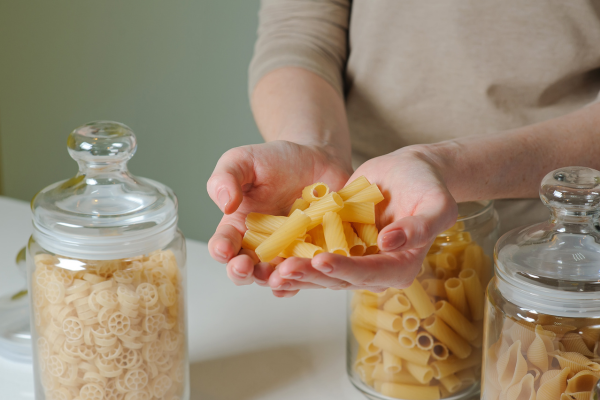
The amount of food we eat is just as – if not more – important than the types of foods we eat when it comes to weight maintenance or weight loss. This is another reason why tracking food intake is critical to weight management. We tend to think we are better at estimating the amount of food we eat than we are. Fortunately, we can learn to better estimate portions to accurately track food intake and ensure we are not overeating.
Here are helpful tips to keep portion sizes under control:
Estimate portions with everyday objects.1
- A baseball is about 1 cup. This is the recommended serving of a fruit or vegetable.
- A tennis ball is about ½ cup and is a helpful measurement to portion out whole grains.
- A deck of cards is about the size of a 3 oz serving of fish, poultry or meat.
- The distance from the tip of your thumb to the thumb knuckle is about a tablespoon. This is a useful measurement for peanut butter, salad dressing or olive oil.
- These tips are especially helpful when eating in a restaurant, ordering takeout or other scenarios when you are not in control of cooking or serving your food.
- Refer to our Smart-size Your Portions blog for more information on estimating portion sizes with your hand.
Make your meal smaller.
- Ask for a to-go box with your meal if you are eating in a restaurant. Put half of your meal in the box before you begin eating and get two meals for the price of one!
- Choose an appetizer or kids meal instead of an entreé. Be sure to choose something with fruits or vegetables.
- Use smaller bowls and plates when serving your meals. We tend to fill up our dinnerware, so try eating from a smaller bowl or plate.
- Use smaller serving utensils and silverware. These can help you monitor the amount of food you are serving and take smaller bites to enjoy meals more mindfully.
Utilize nutrition labels.
- Determine the amount in one serving and portion out your food accordingly.
- Be mindful of the calories per serving.
- Check out our blog on Reading Nutrition Labels for more information.
Build balanced meals and snacks.
- Try filling half of your plate with fruits and vegetables before adding any other foods. This can help you control portion sizes while increasing your fruit and vegetable intake.
- Fill the other half of your plate with whole grains and lean protein for a balanced and delicious meal.
- Include healthy carbohydrates, fats, and proteins in your snacks.
Start practicing these skills today!
You might also enjoy:
Don’t miss another great blog: Subscribe Now
